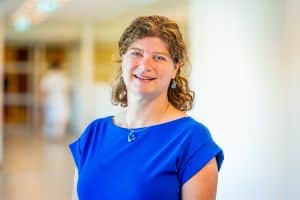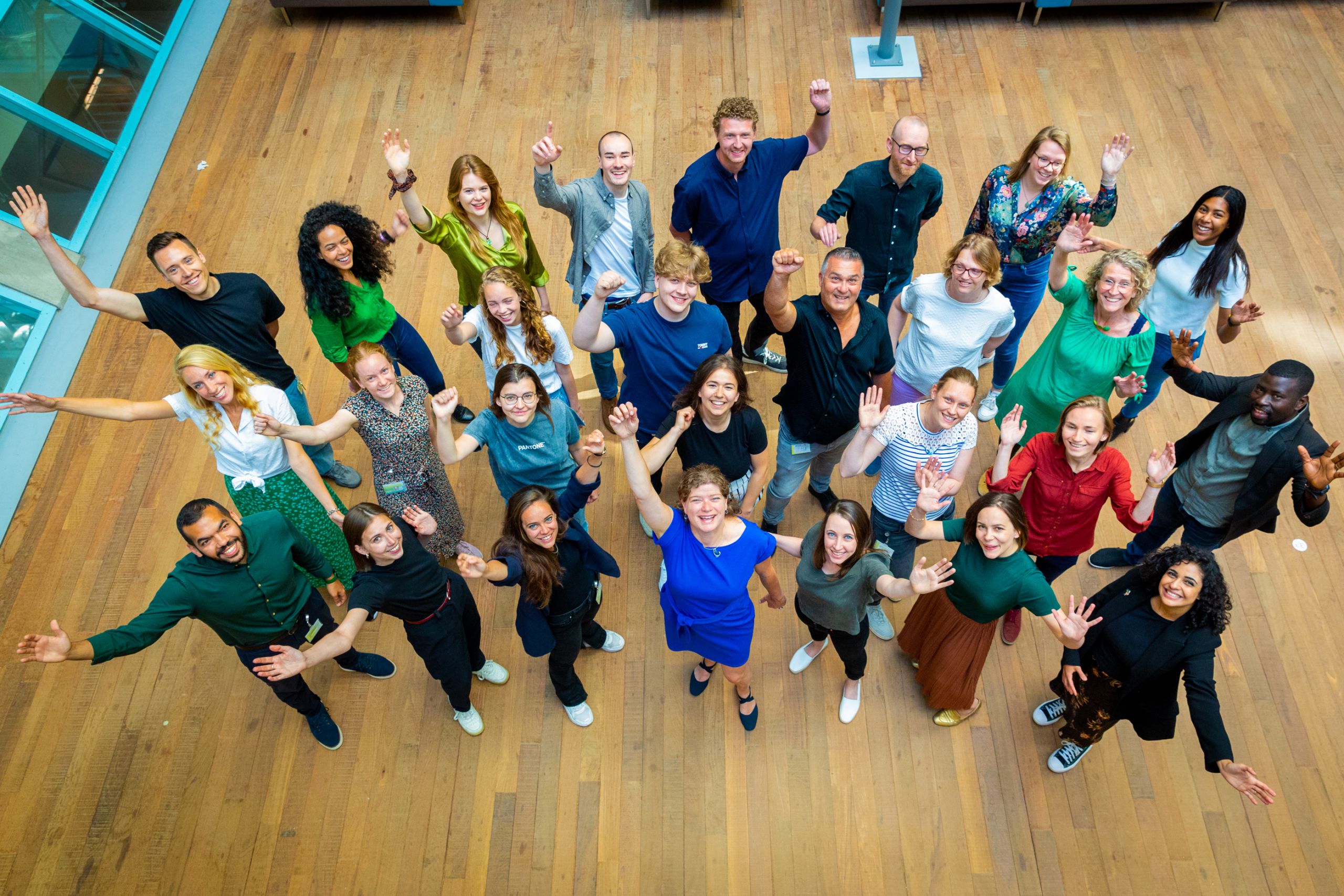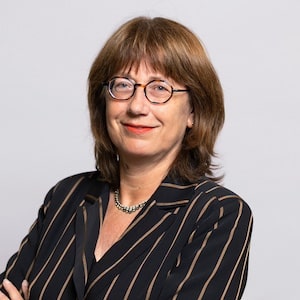Dementie vertragen: vroege diagnose en biomarkers zijn de sleutel
Momenteel leven wereldwijd naar schatting 55 miljoen mensen met dementie en dit aantal zal volgens Alzheimer's Disease International stijgen tot 139 miljoen in 2050. Charlotte Teunissen, hoogleraar neurochemie aan het Amsterdam UMC, leidt de strijd tegen de verwoestende gevolgen van dementie.
Teunissen heeft net een belangrijk onderzoeksartikel gepubliceerd dat nieuwe biomarkers identificeert die verschillende soorten dementie, waaronder Alzheimer, onderscheiden. Een biomarker is een indicator in iemands lichaam die kan aangeven of iemand gezond is of niet. Een wereldwijd netwerk van toponderzoekers gaat dit onderzoek ondersteunen door de nieuwe biomarkers te valideren. Dit is een internationaal project met Teunissen en Amsterdam UMC als spil. Ons initiatief Smart Health Amsterdam heeft gewerkt aan het samenbrengen van die gemeenschap.
Teunissen’s werk is gericht op het identificeren van eiwitten die verband houden met de ziekte van Alzheimer in cerebrospinale vloeistoffen (CSV) om een vroege diagnose mogelijk te maken. Een vroege diagnose is cruciaal, zegt ze. “Als je vroeg signaleert, kun je invloed uitoefenen op het beschadigingsproces. Bij de hersenen is dat extra belangrijk, want het beschadigingsproces leidt tot verlies van hersencellen, en die kunnen we niet vervangen – dus wat we verliezen is verloren.”
Eerste stap naar behandeling
Vroegtijdige diagnose is nog belangrijker geworden sinds de recente bekendmaking van de resultaten van een nieuw geneesmiddelenonderzoek. Het geneesmiddel Lecanemab, zou Alzheimerpatiënten in een vroeg stadium kunnen helpen. De ziekte wordt in verband gebracht met een abnormale ophoping van twee eiwitten in de hersenen. Dit geneesmiddel verwijdert een van deze eiwitten, het beta-amyloïde eiwit, en dat vertraagt de cognitieve achteruitgang. “Je kunt mensen alleen behandelen met een anti-amyloïdtherapie (zoals Lecanemab) als ze amyloïden hebben,” zegt Teunissen. “Dus je moet eerst bewijzen dat ze Alzheimer hebben.”
De toegankelijkheid van de behandeling is problematisch vanwege de hoge kosten en de noodzaak van toediening via een infuus, maar desalniettemin, zegt Teunissen, “is dit een grote eerste stap. Het laat zien dat er onafhankelijke validaties zijn van het concept van de amyloïdtherapie en dat deze aanpak werkt. En dat het veranderen van het amyloïd ook de hersenfuncties in stand houdt en de kwaliteit van leven beïnvloedt. Dat is echt belangrijk.”
Internationale validatie
Terug naar het onderzoek van Teunissen – de nieuwe biomarkers die zij heeft geïdentificeerd moeten nu worden gevalideerd voordat ze kunnen worden toegepast. Deze validatie wordt mogelijk gemaakt door te werken met internationale consortia waarin Teunissen een leidende rol heeft, zoals het Global Biomarker Standardization Consortium en het European Platform for Neurodegenerative Diseases. De werkzaamheden worden uitgevoerd via het Olink Proteomics platform.
Naast internationale samenwerking tussen onderzoekers zijn ook publiek-private partnerschappen essentieel voor het werk van Teunissen. “Als we biomarker-assays (medische toetsingen, red.) hebben en die naar de kliniek willen brengen,” zegt ze, “moet een bedrijf de productie, verkoop, standaardisatie en opschaling op zich nemen. Dat is niet de taak van een academische instelling. We zijn van hen afhankelijk om biomarker-assays op de markt te brengen en om proeven gefinancierd te krijgen, anders gebeurt er niet veel.”

Charlotte Teunissen, hoogleraar neurochemie bij Amsterdam UMC. Fotografie: Mark van den Brink
AVG belemmert vooruitgang
Gevraagd naar wat de vooruitgang in haar onderzoek afremt, wijst Teunissen op de Europese AVG-regelgeving, die gegevens beschermt. Die regels zijn volgens haar te veel gericht op het vermijden van risico’s en belemmeren de vooruitgang. “De contracten die we moeten opstellen zijn tijdrovend en de regels zijn niet voor iedereen helemaal duidelijk. Soms is het niet mogelijk om samen te werken met bijvoorbeeld onderzoekers in de VS, omdat zij onze Europese data niet kunnen gebruiken. Dat belemmert echt het onderzoek.” Teunissen vindt dat de Europese Unie meer flexibiliteit moet toestaan als het gaat om het delen van data voor onderzoeksdoeleinden. “Wij zijn geen Google of Twitter”, zegt ze. “We willen de gegevens alleen voor onderzoek en we kunnen ze beschermen – dus geef ons alsjeblieft toegang.”
Stop Alzheimer voordat het begint
Naast haar werk bij het Alzheimercentrum van het Amsterdam UMC is Teunissen actief in een aantal consortia, verenigingen en andere organisaties, waaronder ABOARD, een grootschalig multidisciplinair onderzoeksproject waarin meer dan 30 partners uit heel Nederland samenwerken. Het doel van ABOARD, zegt ze, “is Alzheimer te stoppen voordat het begint. Door de infrastructuur te creëren voor vroegtijdige diagnose, bijvoorbeeld, maar ook door op meerdere manieren in te grijpen, zoals leefstijlinterventies.” De kracht van het consortium is dat het alle relevante belanghebbenden samenbrengt: “patiënten, vertegenwoordigers, zorgverleners, de diagnostische industrie en ook farmaceutische en academische instellingen”. De Metropool Amsterdam is een ideale uitvalsbasis voor dit soort samenwerkingsactiviteiten vanwege de faciliteiten, middelen en wat Teunissen omschrijft als een concentratie van expertise.
Goede relaties en een sterk verhaal
Teunissen heeft een belangrijke rol gespeeld bij het aantrekken van internationale onderzoekers en bedrijven voor de Amsterdamse biotechgemeenschap. De sleutel daartoe is “goede relaties onderhouden, iets kunnen bieden en een duidelijk verhaal hebben. Een kader geven voor multidisciplinaire samenwerking is belangrijk, zodat we weten bij wie we moeten aankloppen en hoe we belanghebbenden en mensen uit andere disciplines kunnen ontmoeten.” Ons initiatief Smart Health Amsterdam legt dit soort verbindingen en heeft een bloeiend gezondheidsinnovatie-ecosysteem opgebouwd in de Metropool Amsterdam. Teunissen waardeert de kansen die dat biedt. “In ons onderzoek komen we op zoveel ideeën, en we kunnen niet overal expert in zijn. Het is goed om te weten wie in Amsterdam kan helpen bij het vinden van een oplossing. Misschien hebben ze een algoritme, of kunnen ze een app bouwen of specifieke kunststoffen produceren die we nodig hebben. We werken bijvoorbeeld aan een lateral flow test, en als we succesvol zijn in het ontwikkelen van de reagentia en zo, dan moeten we die stoffen in een speciale cassette stoppen. Hier in Amsterdam is zo’n plastic proof cassette leverancier. Het is zo fijn als je makkelijk contact kunt leggen.”
De Olink-technologie werkt bijzonder goed voor het werken binnen een samenwerkingsnetwerk, aldus Teunissen. “Verschillende onderzoekers komen soortgelijke problemen tegen, en het is een geweldige kans om samen te werken omdat iedereen dezelfde technologie gebruikt. Je kunt je resultaten vergelijken. Als je bijvoorbeeld onderzoek doet naar hersenvocht, heb je meestal geen groot cohort. We moeten dus met veel mensen samenwerken om ervoor te zorgen dat we voldoende patiënten in onze studies hebben om ze betrouwbaar te maken.”

Onderzoeksgroep Amsterdam UMC
Foto: Mark van den Brink
19 december 2022
Meer weten over
Neem contact op
Blijf jij ook op de hoogte?
8x per jaar nieuws en events uit de regio: schrijf je in voor de Board Update nieuwsbrief
Deel dit artikel
Wil je op de hoogte blijven?
Volg ons dagelijks op LinkedIn en schrijf je in voor de Board Update nieuwsbrief.
Lees ook deze berichten
- Met de selectie van vier kanshebbers is de regionale voorronde van de ...
- Met meer dan 80 ondernemers, 40 investeerders en diverse dienstverleners bood LSH Capital Match ...
- In tijden van geopolitieke spanningen, technologische revoluties en politieke onzekerheden is het ...




